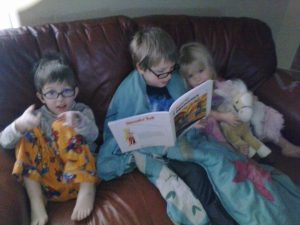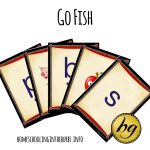Barton Teaching Method: Tips for Tutors
Back in the day, when I got started tutoring my own kids with Barton Reading and Spelling, our virtual academy ndd a well trained teacher who was Barton Certified named Lisa Weaver to help me get started and answer my questions as they came up.
You may not have a Lisa Weaver handy. So my goal is to share with you what I learned so that you can get started off right and feel confident.
Barton is Designed for Dyslexia
You may not know where to turn if your child is struggling with reading and/or spelling. You also might not know what to look for if you suspect dyslexia as a problem. That was totally me, plus I didn’t want to pay for a diagnosis. Here are some of the signs of dyslexia:
- Memorizing their address, the alphabet, or their multiplication tables
- Learning to tie their shoes
- Writing some letters or numbers backwards past the end of first grade
- Learning to tell time on a clock with hands
- Telling left from right.
- Confusing letter pairs such as b-d, b-p, p-q, or g-j.
- Saying sounds in the right order in multi-syllable words such as animal, spaghetti, hamburger, consonant.
There is a more comprehensive list from the Barton and Reading website so that you can recognize the signs in preschool, elementary, high school, and adulthood.
No diagnosis? No problem.
The Barton program is great for any student (child, teen, and adult) who reads slowly and/or inaccurately, guesses when they read unfamiliar words, skips over or changes prepositions when reading (some prepositions include: to, by, for, with, of, in, at, on, about- basically words that tell you where something is in relation with something else).
Dyslexia is NOT a Requirement
After teaching my 3 oldest children using Barton because they struggled with reading and spelling, I decided I would teach the 3 youngest, too, even if I didn’t suspect dyslexia.
I didn’t want them to try one curriculum and have to switch to another curriculum only to have them lose confidence in their abilities. That inner speech of, “I’m a bad reader,” or “I’m a bad speller,” sometimes can lead to discouragement and wanting to give up.
So, I wait until my kids are at least 5 years old and can pass the Student Screening.
Before tutoring anyone, they should be able to speak and understand English.
- They should not be part of an ESL (English as a Second Language) program. If they are part of an ESL program, they need to speak at 2nd grade or above.
- They cannot have severe receptive or expressive language challenges.
- Must have an IQ of 70 or higher
Time

By suebun – Arcadia Watches (Transferred from en.wikipedia to Commons by Cloudbound.), CC BY-SA 3.0, Link
Your child will need at least 2 hours of one on one tutoring each week. If you can schedule more in, that’s even better.
Keep tutoring sessions 60 minutes or shorter. I like to stop the lesson on a positive note.
If a student gets frustrated near the end of a lesson, I go back to doing something they can do.
Pay attention to how engaged they are. Once they stop paying attention, it’s time to stop. They’re not absorbing what you’re teaching and you’ll end up spending more time reviewing- that can be very discouraging for students.
If your student is younger elementary 1-3, it’s a good idea to keep the lesson to 30 minutes and integrate a game or two to keep things light and the student interested.
Replace All Language Arts Curriculum
This is a tough one for parents and some students, especially if they are competitive and concerned that they’ll fall further behind in grade level.
Studies have shown that consistently getting 2 hours per week and stopping all language arts programs outside of Barton significantly increased reading ability. One study showed students advancing by 2 grade levels in 40 weeks. It didn’t matter what reading test was used.
What Barton is Not
 Barton is NOT a penmanship class. If a student writes sloppy or inserts capital letters in the middle of the word, do NOT try to teach them how to write neatly.
Barton is NOT a penmanship class. If a student writes sloppy or inserts capital letters in the middle of the word, do NOT try to teach them how to write neatly.
Yes, penmanship is important, but that is a separate lesson.
If your child has dysgraphia or needs penmanship lessons, Handwriting Without Tears is the program that Susan Barton recommends.
I also found that StartWrite has the same font and lines for Handwriting Without Tears, so I have made my own worksheets for penmanship that feature words they can read from the Barton Reading and Spelling Program for my kids to practice outside of their Barton lesson.
How to Handle Difficult Handwriting
During Barton lessons, do not comment on handwriting.
Instead of writing on paper, have them write on a lap-size white board.
The kids I tutor love using these boards because we can change the colors and it’s easy to erase when changes need to be made.
In our lessons, we make sure there are no guidelines (the lines similar to paper used in early elementary school) because that can be confusing for some kids.
No OUTSIDE Reading
I can’t emphasize this enough. Do not encourage or force your kids to read outside of Barton until the middle of level 4 for pleasure reading and level 6 for textbooks. Read to them, get the audio versions of books they are interested in, but DO NOT LET THEM READ OUTSIDE OF BARTON.
Why? because our goal is to teach them how to read by sounding out the sounds instead of guessing which word is on the page. Reading outside of Barton prevents them from overcoming the temptation to guess when they read. When I explained this to a parent recently, initially she seemed surprised. When I explained to her what our goals are and what we are trying to accomplish, it made sense to her.
Still find this difficult to swallow? Go back to the section above about Language Arts and click on the link to the studies. This should help calm your concerns.
What to do Instead

The kids looking at pictures for the Standin Tall audiobook series
Again, read to them, get the audio books, etc. Their intellect is still expanding through these methods. Show them that you love reading.
Read the textbook to them. Read everything on their worksheets to them and write down their answers.
If they are writing papers on a computer, type it for them. Better yet, get one of those programs that listens to what they say and types it for them. It will help maintain the integrity of your child’s voice in their writing.
Related articles
Barton Reading & Spelling
This is our #1 post because parents and educators are seeking solutions for adults and children who are struggling to read. Find out how the Barton Reading & Spelling Program works and what you need to get started.
Barton Games for Book 2
Are you tutoring someone who has a hard time associating letters with the sounds they make as taught in Book 2? I created 2 games to help my son move forward when he got stuck in lesson 1 of Book 2. They’re free and I’ll explain how we play them.
Free Homeschool Materials
I created and gathered free homeschool materials you can use, including some handwriting using Barton Reading & Spelling site words.










Good information because there are some people who try to do homeschooling and really don’t know what is necessary to be successful at it.
Hi, Ronnie! Thanks for dropping by. I appreciate your comments. You’re right, people want to know what is necessary to do homeschooling so they can be successful at it. These tips, of course, only apply to the Barton method of teaching reading, writing and language arts.
This information is indeed helpful. How does one know if a child has dyslexia? I went thru the signs you’ve put together, but aren’t these symptoms most children go thru when they’re still beginning to learn? Is there a time window that one needs to observe the child before deciding the child is dyslexic?
Thank you Sandy, for dropping by. You have some intriguing questions.
The only way to truly know if a child has dyslexia is to get an official test. This can be expensive.
You’re right, many kids experience these challenges when they are first learning. However, most will catch on quickly and outgrow these difficulties by the end of 1st or beginning 2nd grade. I include more in depth warning signs in Barton Teaching Method: What Parents Need to Know.
It’s a good idea to seek intervention as soon as possible. The longer the child tries to compensate for dyslexia without the tools needed for reading, the harder it is to overcome them and learn what is taught in Barton. Even worse, the child will often feel stupid, dumb, and lack self confidence.
Therefore, if reading at the beginning of second grade is slow and not fluent, it is definitely a good time to seek the help of a Barton Tutor or start tutoring your child at home.
I just looked at the page and I must say that overall I think the page looks very good. The menu at the top is smart with the initials in the corner nice touch. I think that the content is to the point and easy to read. I noticed a lot of sale links at the bottom of the page with a few items unrelated to the Barton teaching method, home schooling, or anything else educational. Question: Do men home school children with special needs? just a thought that popped up. Overall I learned something from reading the content and if I were home schooling and needed this information I would be on this page looking for more.
Dear Ken,
Thank you for pointing out some of the issues my post was facing. I went back and looked. Yup, it was a bit tacky having all those ads. I fixed that issue. Thank you also for the compliments on the appearance, too.
To answer your question about men homeschooling kids with special needs: yes, I have met several men who homeschool their kids whether they are special needs or not.
I’m happy to hear that you found the site to be useful.
How long would children with dyslexia need to use this Barton Reading and Spelling method? I’m glad to stumble upon your site. I will pass this information to my friend who is homeschooling her children.
Yvonne,
Thank you for stumbling onto my site. Also, thank you for passing this onto your friend.
You’ve asked a great question. The length of time children will spend on the Barton Reading and Spelling method depends on several factors. Here are a few: their age, how much exposure they have with reading and spelling, the frequency and length of tutoring sessions, and their individual ability to grasp new information. Some may need to repeat lessons while others understand it the first time through.
The average student takes about 2-3 years. When they complete the Barton Reading & Spelling program, they’ll be reading at the mid-ninth grade level.
Hello, Becky
This is extremely useful for parents who have young kids. Unfortunately, I do not have them already. However, I found something that is even useful for me! That if a kid does not pay more attention to particular subject you do not need to put more effort to teach them. I always try to do more when I am already tired I still want to do more. As your blog says it is wasting of time am I right?
Gedas
Gedas,
Thank you for dropping by. You’ve brought up some points to ponder and great questions.
When I said that if a child isn’t paying attention to a particular subject, it might be a good idea to stop teaching, it’s because they are no longer absorbing what they are being taught. Their mind is elsewhere. One of the benefits of tutoring my own kids is that I can tutor them for a brief time and come back to it after they’ve gotten their wiggles out.
I find that when I am tired or distracted while doing a project, I’m less efficient. I would be able to accomplish more when my mind is fully engaged. It might help to write down what I was planning to do next, then return when I am more rested and focused. I’ll get the same job done with greater speed and accuracy. That same concept applies to children when they are learning. Learning is their work.